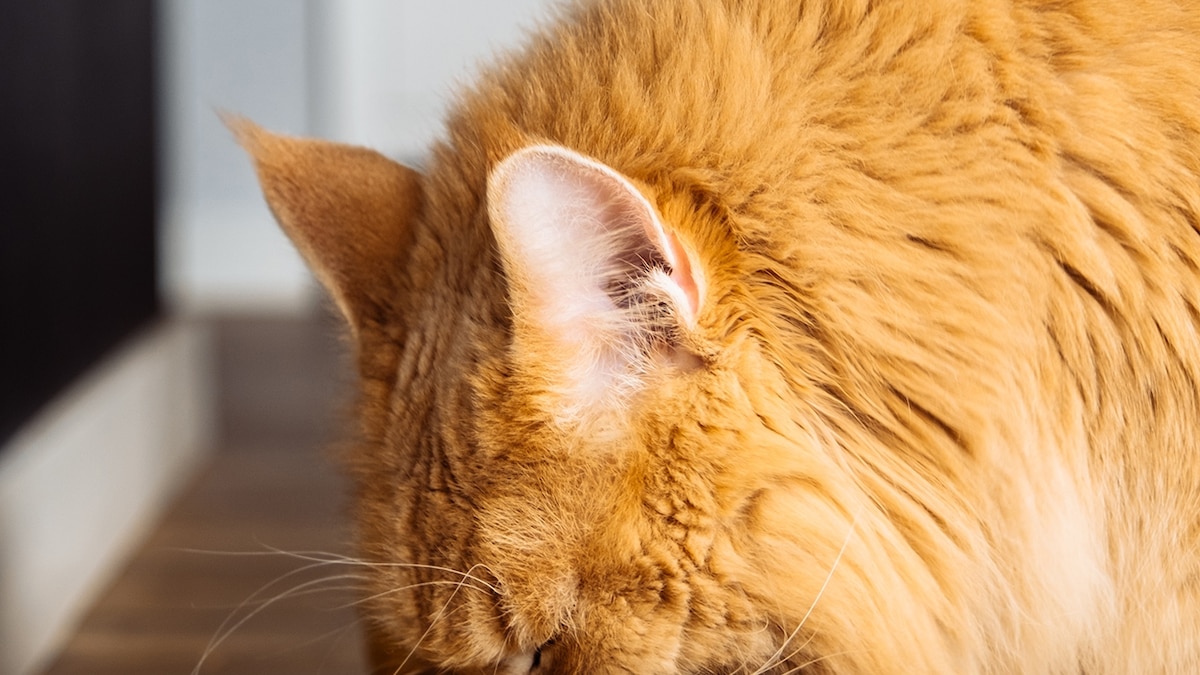Now Reading: Why raw pet food isn’t worth the risk
-
01
Why raw pet food isn’t worth the risk
Why raw pet food isn’t worth the risk

Pet owners on TikTok who feed their cats and dogs raw food regularly show off their colorful bowls, full of uncooked meats, organs, heads, feet, or bones.
The $3.1 billion global raw pet food industry has always been controversial, since the food contains animal protein that hasn’t been cooked or heated enough to kill germs. But a recent link to bird flu is sounding a new alarm.
In December, a pet food company recalled a batch of its raw turkey frozen food after it tested positive for H5N1, the highly deadly bird flu virus. A house cat who had consumed the food died from the virus, and genetic testing matched the cat’s virus with the virus in the food. It’s not the only recorded case. A house cat in California also tested positive for the H5N1 virus in December after consuming a different brand of raw pet food. And in March, bird flu was detected in two domestic cats in New York, linked to another type of raw pet food. Those cats all died.
“Some commercial raw food is frozen, freeze-fried, or dehydrated, which may give people a false sense of security about its safety,” Aimee Simpson, the medical director at VCA Cat Hospital of Philadelphia, says. “It’s important to note that these methods are not reliable or effective ways to kill bacteria or viruses like avian influenza.”
Cats are especially susceptible to H5N1, and the current strain has a high fatality rate in felines, Simpson adds. Dogs can become ill, but it’s less likely they’ll become seriously ill.
Why pet owners choose raw food
The raw pet food scene emerged in the 1990s as a healthier alternative to commercial pet food. Today, some pet owners choose raw diets to feed their cat or dog what their ancestors would have eaten in the wild. They say it improves health, giving cats and dogs shinier coats, cleaner teeth, and better digestion. Raw diets also enable owners to control what goes into their pets’ food, avoiding additives and preservatives in many commercial pet foods.
Yet the supposed health benefits of raw pet food diets are not strongly supported by scientific evidence, says Antonio Varcasia, a scientist at the University of Sassari in Italy, who studies how parasites spread in animals. He adds that improperly balanced raw diets can also result in nutritional deficits, like too much protein or too little fiber.
“There are some surveys of owners who feel that their pet is healthy and doing well, but this is not scientific evidence of benefit,” says Jennifer Larsen, a veterinary nutritionist at the University of California Davis.
You May Also Like
And in light of the growing raw pet food trend, the American Veterinary Medical Association, the World Small Animal Veterinary Association, the FDA, and the Centers for Disease Control have all issued statements advising against raw diets.
What’s wrong with a raw food diet for your pet?
“What is very evident are the possible disadvantages and risks, for the pet and the owner,” Varcasia says.
Pets that eat a raw food diet can be exposed to parasitic infections—like Toxoplasma gondii, the leading cause of death from foodborne illness in the U.S., and Echinococcus granulosus, a tapeworm that can cause gastrointestinal issues and may be fatal if spread to humans, which can happen through direct contact with food or via contaminated surfaces. Bacterial contamination can occur too, since Salmonella, E. coli, and Listeria are commonly found in raw meat and can cause severe gastrointestinal illness in animals and humans. A 2023 Salmonella outbreak in humans was linked to handling raw dog food, and a 2017 E. coli outbreak in humans was tied to dogs that were fed a raw diet.
Now, bird flu joins the list of possible germs that can get into raw pet food, likely due to infected chickens being used as an ingredient (on farms, bird flu killed over 20 million chickens in 2024). “Cats and dogs can be infected if they eat sick or dead infected wild birds, drink unpasteurized milk or cream from infected cows, or eat undercooked or raw meat from infected ducks and chickens,” says Iowa State University veterinary pathologist Silvia Carnaccini.
How to protect your pets (and yourself)
The AVMA has issued recommendations for cat owners, which include keeping cats indoors to prevent exposure to wild birds, thoroughly cooking meat before feeding, and avoiding raw-meat-based treats or foods. They also recommend feeding cats dairy products only if they have been pasteurized or thoroughly cooked, and immediately contacting your veterinarian if you notice signs of bird flu in your cat. Symptoms include fever, tremors, heavy nasal discharge, and rapid or difficult breathing. Symptoms would be similar in dogs, but are likely to be less severe, although no cases have been confirmed in dogs in the U.S. during this most recent outbreak.
“Unfortunately, no approved vaccines or treatments are available yet to protect [pets] against H5N1, which is why these precautions are so important,” writes Carnaccini.
The risk of a human contracting the H5N1 virus from an infected pet is low, according to the CDC. And it hasn’t happened yet with H5N1, says National Institutes of Health virologist Martha Nelson. “It can go in that direction [of pet to human transmission], but it’s extremely rare,” Nelson says. “For many pathogens, including influenza, there appears to be a strong biological barrier for transmission from pet dogs and cats to people.”
To keep pets safe, Nelson recommends “keeping your cat indoors so it doesn’t scavenge dead infected birds…and not feeding pets raw pet food that could potentially be contaminated.”
Varcasia says that if pet owners insist on feeding their pets a raw diet, they should consult a veterinarian, ensure the chosen brand adheres to strict safety regulations, and consider the origins of the ingredients. But the safest choice is to avoid raw food altogether, Nelson says: “Not feeding your cat raw pet food is a pretty easy, implementable guideline.”

























